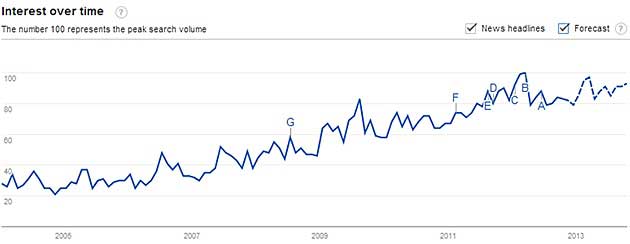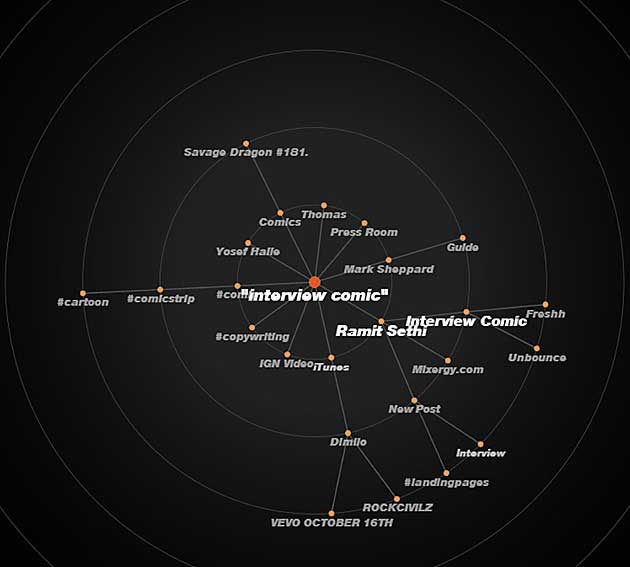Editor's note: The previous installment covered three content marketing mistakes: Your content doesn't have specific goals; your content doesn't have anything to sell; and your content didn't bother asking for the transaction. In this installment, the author lists and discusses four more content marketing mistakes.
4. Your content sounds like everyone else's
Am I imagining it—or does it sometimes feel as if the same blogger writes for every blog? Word choice, metaphors, structure, cadence, they all sound the same!
Don't be assimilated into the blogger Borg collective.
Write with vulnerability, enough that it makes you nervous to hit the publish button.
Read BrainPickings.org, read fiction, watch those deeply intellectual movies that make no sense (and watch them with the subtitles on).
Don't read those who "write blogs"; read those who string words into colorful threads—and those threads into paragraphs of tapestry that even the uninitiated could not confuse for a mere article.
Play with language. Know that each word you select performs a function, paints a picture.
Words are the most important soldiers you have in this digitized international war for attention.
Struggle to believe that your voice is good enough, even if it is small.
And don't be afraid to sound like an idiot. Even idiots can make a living online.
5. Your content isn't based on any research
If you're not using at least Google Keyword Research before you write an article, you're not writing for an audience, you're writing for yourself. That's not marketing, that's journaling.
But keyword research is merely the beginning. You can use all kinds of searches to determine whether your content has an audience. Here are just a few content research tools you can use:
- Topsy: Top links being shared on Twitter or Google+
- Google Trending Searches: The hottest Google searches happening right now
- Google Trends: The relative interest on a given search over time
- Yahoo Trending News: The hottest searches happening on Yahoo News
- YouTube Trends Dashboard: Today's top videos by country, city, age, and gender
- YouTube Trends Blog: Data-driven research behind different video trends and why they happen—essential to understanding what makes a video viral
- BottleNose: Real-time social analytics tool, first of its kind, and too cool to describe in a one line snippet
- popurls: All of the top stories from all the major news aggregators such as Digg, Reddit, Huffpo
By running your content idea through the gamut of these tools, you can find out whether your content is going to be viable for an audience. But you can also discover strategic approaches for using your content.
For example, I tested the phrase "landing pages." I ran it through Google Trends and discovered an upward trend for the phrase, which told me it's a viable topic.

I then ran "landing pages" through BottleNose and used its Sonar Tool to find that "Ramit Sethi" and "Interview Comic" are associated phrases that are standing out right now, and that the interview comic (i.e., infographic) by Unbounce is the subject of much discussion.

Now, I know that I don't want to go toe to toe with Ramit for the term "landing pages." Instead, I'd consider writing an article about how that "interview comic" took a new spin on the traditional infographic, which would then...
- Improve my chances at getting shared by the influencers who shared the original content
- Ride the wave of the hard work Ramit and Unbounce have already done
- Not get lost in a sea of other "landing page" noise
So, though it's true I didn't get to write my article about "landing pages," I found something that was much more viable and much more likely to get shared.
Even better, nearly half of the work has already been done, and all I have to do is talk about how intriguing this format is, speculate on how it might be the beginning of a trend, and drop a few links to deviantart Web comic artists, and BAM! Now I have a brilliant future trends post.
See what a little bit of research can do?
6. Your content uses only one media format
OK, look, we live in the future.
Bandwidth is cheap, and text and images aren't the only way to get your message across.
We have video, podcasting, graphic slideshows, live streaming, and a host of other new media formats that can spread your message. Webcams, microphones, design programs (such as Gimp), and many of the tools you need can be found on the cheap or free. (Hint: check out the "free stuff" and "barter" sections on craigslist.)
When you find the format that best suits your voice (for me, it's video), also find another format that complements it. Why? Two main reasons:
- Different members of your audience absorb information differently, so expanding to multiple formats means your message has a better chance of really sinking in for everyone.
- Using multiple media formats adds depth to your brand. You can use different formats to showcase different sides of your brand's personality. For example, my video show uses humor to drive points home, but my audio podcast uses in-depth interviews to drive deeper discussion and to showcase different perspectives.
Limiting yourself to one technology means you'd b sharing a fraction of your voice and reaching a fraction of your audience.
The two biggest obstacles when trying a new format are the format itself and scheduling the creation of content. Fortunately, both are pretty easy to overcome (hint: just start doing it).
7. Your content dresses exactly the same everywhere it goes
You wouldn't go to a black-tie event in jeans and a T-shirt, would you? So why try to present your content the same way everywhere you publish it?
Every social network or forum has its own vibe. It's up to you to understand that vibe and work it into your content (or decide to leave it out entirely).
Analyze your streams on the major networks—Facebook, Twitter, Linkedin, and Google Plus—to see what kinds of pieces get the most likes, comments, and shares. Note, too, that before posting a link to a piece of content, you can change the headline or descriptive wording to optimize it for each network.
But don't forget about the more niche sites. Stories that make it to the top on Digg, Stumbleupon, and Reddit all have their own certain style, and it's up to you make sure you present your content in a way that is appropriate to each platform.
Don't just blast the same stuff everywhere. Take careful inventory of what stands out in each place. Your consumers will thank you for it.




